Top 10 Interesting Facts About Roman Gladiators
One of the most interesting things about ancient Rome is the love for bloody gladiator fights the people of the time had. The life of a gladiator must have been grueling and difficult, but it makes it all the more interesting for history lovers out there. Here are the most interesting facts about Roman gladiators.
Aside from prisoners and criminals who were sentenced to death and forced to fight as gladiators, most gladiators didn't fight to the death, and there's a good reason for it. The best gladiators were essentially celebrities and earned their managers a lot of money meaning they will have wanted to make as much profit out of them as possible. Gladiators were trained to wound, not to kill and had a code to follow. Of course the life of most gladiators was short as many died from their injuries.
I always thought one of the two gladiators died, good to know.
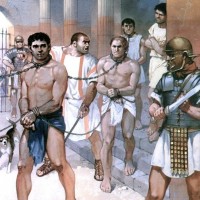
Most gladiators at the time were of course either prisoners of war or slaves selected for their strong physiques, but as the spectacle of gladiator fights became increasingly popular, many free working class men decided to join for fame and money. Some former soldiers in debt would also join in hopes of paying their debt and making money for the future.
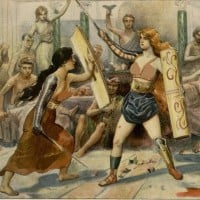
Female gladiators existed but like their male counterparts, they were almost always slaves. These women were pitted against one another as well as male gladiators and even against animals or dwarfs, the latter being more of a comedy act.
I already knew most of these but still cool list.
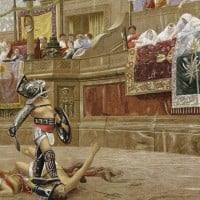
In ancient Rome, gladiators would appear on paintings, walls and sculptures. They were also very popular with women and essentially were sex symbols. There were even products made from these alpha males' sweat and blood. Gladiator blood was believed to have magical powers and some women dipped it into their hair pins. Gladiator sweat on the other hand was mixed into perfume and was believed to be an aphrodisiac. To have a dream of a gladiator was said to foretell of a fortunate marriage.

Yes I know, this sounds crazy, but it did happen. The word for these staged naval combats was "naumachia" The colosseum in Rome was once flooded after Emperor Titus ordered the newly built Colosseum to be flooded. Gladiators would come out on platforms that looked like ships to fight each other. The bottom of the ships were made flat to ensure they wouldn't get stuck as the water was only around 5ft deep.
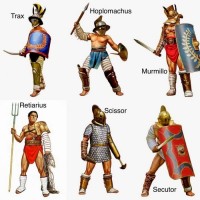
Gladiator fights became a well-organized blood sport, think today's combat sports like pro wrestling, MMA or boxing, but with only one leaving the fight alive. There were four principal classes of Roman gladiator:
- Samnites: The Samnites were named after the great Samnite warriors that Rome defeated in the early years of the republic. They were armed with a long rectangular shield (scutum), a plumed helmet, a short sword, and probably a greave on his left leg.
- Thraex: The Thraces were named after another enemy of Rome, and they usually fought in pairs against the Murmillones. These gladiators usually wore armor pieces such as leg wrappings, loincloth, a belt, a pair of long shin-guards or greaves and an arm guard. As for their weapons, they were equipped with a gladius and a very small, round shield. They also carried a spear, which they would have to cast at their opponent before closing for hand-to-hand combat.
- Murmillo: A murmillo wore a helmet with a stylized fish on the crest (which is why they were called "fish men") and they are heavily armored. They fought with a gladius and a tall, oblong shield called a scutum.
- Retiarius: This gladiator type has perhaps the most well known look as they fight using a trident and a net.

During the funeral of a wealthy Roman, slaves and prisoners of war had to fight with each other in what was essentially a human sacrifice. This was done because it was thought that the blood calms the gods, and the show relaxed the dead man's mourning family.
This was one of those I didn't know before. Definitely a very different concept to what we usually think of the gladiator fights.
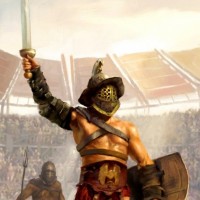
A gladiator who won several fights, served an indefinite period of time or payed for it were offered their freedom. Those who did win or buy their freedom, or at times at the request of the crowd or Emperor, were given a wooden sword (rudis) as a memento and a symbol of their freedom. In many cases they would become a gladiator trainer. Surprisingly, there were gladiators who refused their freedom and chose to continue fighting.
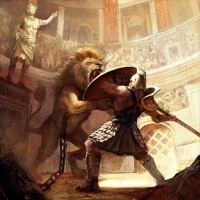
Tangling with wild beasts was reserved for the "venatores" and "bestiarii," special classes of warrior who squared off against everything from deer and ostriches to lions, crocodiles, bears and even elephants.
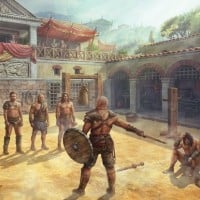
According to historical finds, these schools were probably run like prisons, although it's possible the best gladiators were treated better than the average gladiator. Gladiator schools were owned by wealthy men called "lanista" and they would rent their gladiators out for individual events. The price of each fighter varied obviously with untested novices being the cheapest, while veterans who were loved by the public could fetch huge sums. According to the sources from the time, if a lanista's gladiator was killed in the arena, the rental contract would be automatically upgraded to a sale agreement to compensate.
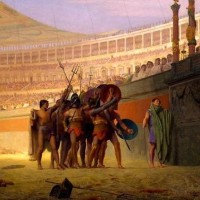
These groups were established in training camps and the members would ensure that if one was to die, the others would make sure a fallen gladiator's wife or children were looked after financially. They would also make sure their deceased comrade would receive a proper burial.
Okay this takes the cake in terms of interesting facts.
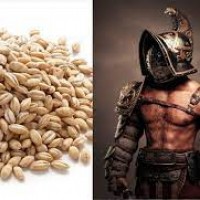
Archeologists found many gladiator bones over the years and studies on these bones have shown that a gladiator mostly ate wheat, barley and beans. The likely reason why is because that was the cheapest way to feed them.

During gladiator fights, if the Emperor was in attendance, he would decide the fate of the defeated gladiator, often by listening to the crowd. Many people believed the Emperor would show everyone his decision to have the gladiator killed by pointing his thumb towards the ground, but historians believe it was actually the thumbs up that meant death.
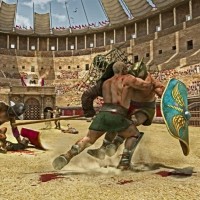
On average, a gladiator back then would have 4 to 5 fights a year, sometimes even less. Once they finished a fight, they would be given time to recuperate, heal their wounds and train for their next fight.
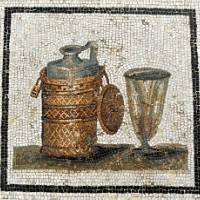
After their fights, gladiators drank a tonic made with plant ashes which was believed to help their bodies recover faster.